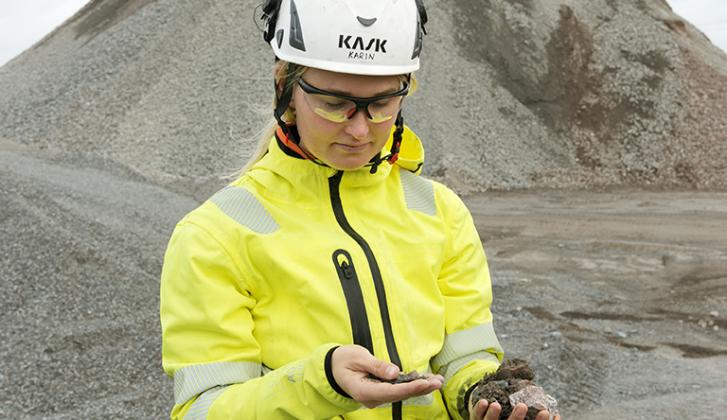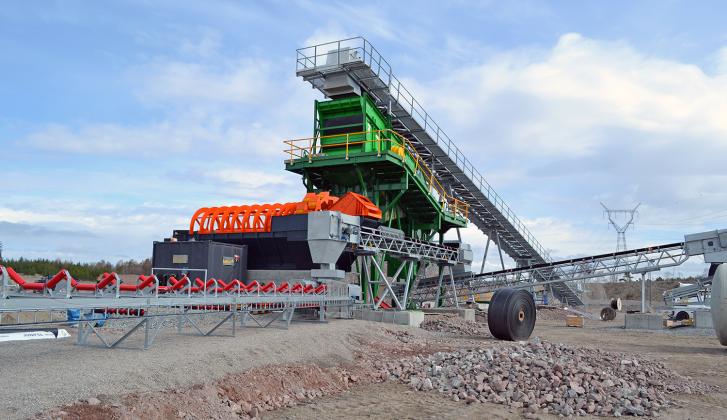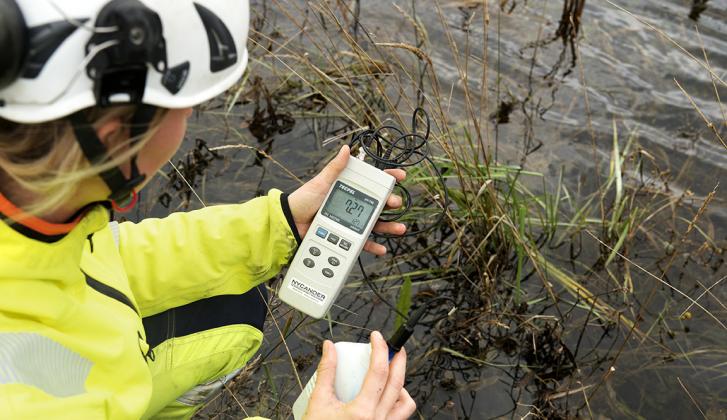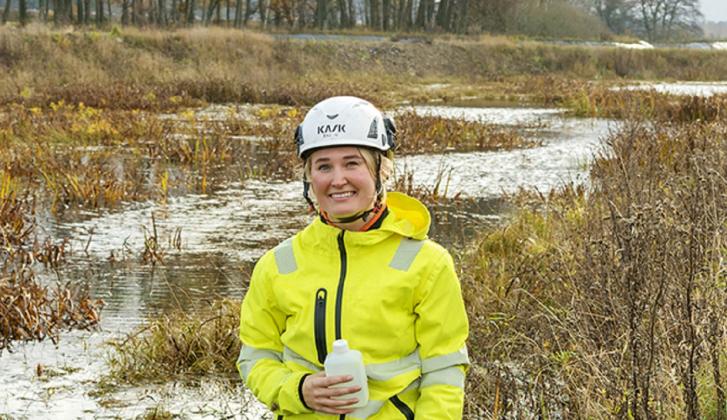
HeidelbergCement's Swedish aggregates subsidiary, Jehander, has an agreement with the Swedish Transport Administration to carry out the necessary blasting, which includes high demands in terms of keeping excess nitrogen from the environment. When work on the Stockholm Bypass is in full swing, six shiploads per day – equal to 240 truckloads – will transport 12,000 tonnes of blasted stone daily to Jehander's facility in Löten, on Ekerö, where the nitrogen is removed from the stone in a way that contributes significantly to biodiversity.

Creating wetlands
Jehander receives the blasting stone from Förbifart Stockholm and washes it. The wastewater then contains large amounts of nitrogen. To absorb the nitrogen, we create wetlands, a habitat type that has been progressively lost over time due to human activity. According to the Swedish Environmental Protection Agency, up to a quarter of Sweden's original wetlands have been destroyed through digging and cultivation. As a result, numerous species are displaced as their habitats disappear.
Wetlands are an essential part of the environment and a source of natural purification that removes nitrogen and phosphorous and contributes to increased biodiversity.

Nitrogen is a nutrient, but too much nitrogen in the Baltic Sea can lead to eutrophication and algal blooms. We aim to avoid this with the help of wetlands. In the wetlands, the water will circulate for about two years so that the plants absorb the nitrogen and bacteria work to convert the nitrogen to nitrogen gas.
Jehander has created a six-hectare wetland area divided into three small lakes. There, various plants thrive, such as sword lilies, reeds, and water lilies. Introducing water into the landscape is important for birds, amphibians, lizards and other reptiles, especially when there is a lot of agricultural landscape in the surroundings.
What is the biggest challenge?
Wetlands are a natural system. That means humans cannot control them – they are not a machine. It can take time for plants to establish themselves and begin to flourish. Jehander will therefore follow up regularly to ensure that nitrogen meets the desired levels. More plants may need to be added and additional environments created for the bacteria that are present. It is a continuous effort.
A landscaped wetland starts at square one: It can take up to five years before it has the plants it needs. In a natural wetland, the plants that thrive have had a long time to establish themselves. In a landscaped wetland, we first let plants establish themselves, then come the plants that thrive there naturally. After a while, we may need to supplement with plants that have high nitrogen uptake. We then start with plants that are naturally found in the area.

In Löten, Jehander today has a large gravel pit with a harbour to deliver materials to the concrete industry. This means that there is already a complete infrastructure for receiving materials. The mission comprises a total of 4.5 million tonnes of blasted stone, and the sea route is the best transport alternative from an environmental point of view. A ship can carry the equivalent of 40 truckloads, reducing the pressure on truck traffic in the Stockholm region. At the same time, the deliveries contribute to us being able to create new wetlands, which is completely in line with our work to improve biological diversity.
About the author
Karin Nilsson
Environmental and Permit Specialist at Jehander
Karin Nilsson has a master's degree in biology and has been with Jehander (Swedish subsidiary and aggregates producer) since 2018. She started as an intern and later on became a trainee. In addition to her work at Jehander, Karin volunteers within Engineers without Borders – she is also Jehander's very own quizmaster.








